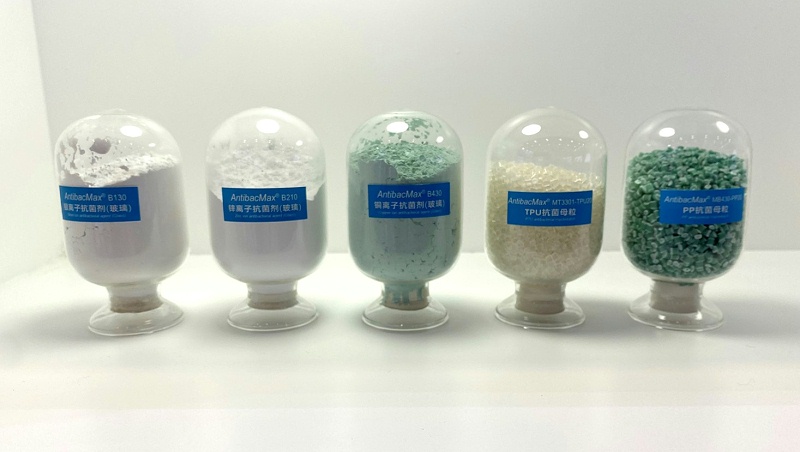As people’s health concerns continue to rise, antimicrobial agents are becoming essential in everyday life. Currently, there are two main types of antimicrobial agents available on the market: inorganic metal ion antimicrobial agents and organic antimicrobial agents. So, what are the differences and what are the advantages and disadvantages of each? Here we will introduce them one by one.
Inorganic metal ion antimicrobial agent refers to the antimicrobial agent made by adding ionic metal elements, such as silver ions, copper ions and so on. This type of antibacterial agent mainly has the following advantages:

AntibacMax antimicrobial additives
Good antibacterial effect: ionic metal has a broad-spectrum antibacterial effect, can inhibit the growth and reproduction of most pathogenic microorganisms, while having a strong bactericidal effect.
Long-lasting: ionic metals are released relatively slowly on the surface of materials and can continuously inhibit the growth of microorganisms, thus maintaining their antibacterial properties.
Safe and environmentally friendly: The active ingredients of inorganic metal ion antimicrobial agents are natural elements and contain no organic matter, which will not cause pollution or harm to humans and the environment.
However, inorganic metal ion antimicrobial agents also have some disadvantages:
Dispersion problems and the need to add through a specific process: the inorganic metal ions are evenly dispersed in the substrate requires a specific addition process, poor dispersion will affect the antibacterial effect of the final product. Generally the antimicrobial powder can be made into an antimicrobial masterbatch corresponding to the base material and then mixed with the base material particles through the masterbatch to achieve a uniform dispersion effect
Impact on material performance: Some substrates have high requirements for transparency and colour, but the addition of metal ion antimicrobial agents will affect the colour and transparency and require the selection of a suitable antimicrobial agent or a specific process to modify the material to meet the requirements.
In contrast, organic antimicrobial agents are those made with organic substances, such as quaternary ammonium salts and phenols. These antimicrobial agents have the following main advantages:
Good antimicrobial effect on specific microorganisms: organic antimicrobial agents have a good inhibitory effect on certain specific microorganisms.
Wide range of application: organic antibacterial agents are not only suitable for various material surfaces, but also for cleaning agents, disinfectants, antibacterial coatings and other fields.
Safe to use: The active ingredients of organic antimicrobial agents are mostly organic substances, which are less harmful to humans and the environment and are relatively safe.
However, organic antimicrobial agents also have some disadvantages:
Weak antibacterial effect: compared to inorganic metal ion antibacterial agents, the antibacterial effect of organic antibacterial agents is relatively weak.
Poor durability: The bactericidal effect of organic antimicrobial agents usually lasts for a short period of time, making it difficult to maintain their antimicrobial properties.
Easily decomposed and degraded by microorganisms: The active ingredients of organic antimicrobial agents are mostly organic substances, which are easily decomposed and degraded by microorganisms, thus reducing their antimicrobial effect.
Overall, inorganic metal ion antibacterial agents and organic antibacterial agents have their own advantages and disadvantages. When choosing an antimicrobial agent, it is important to balance their advantages and disadvantages to achieve the best antimicrobial effect, based on the actual needs and application scenarios.

-300x210.jpg)
